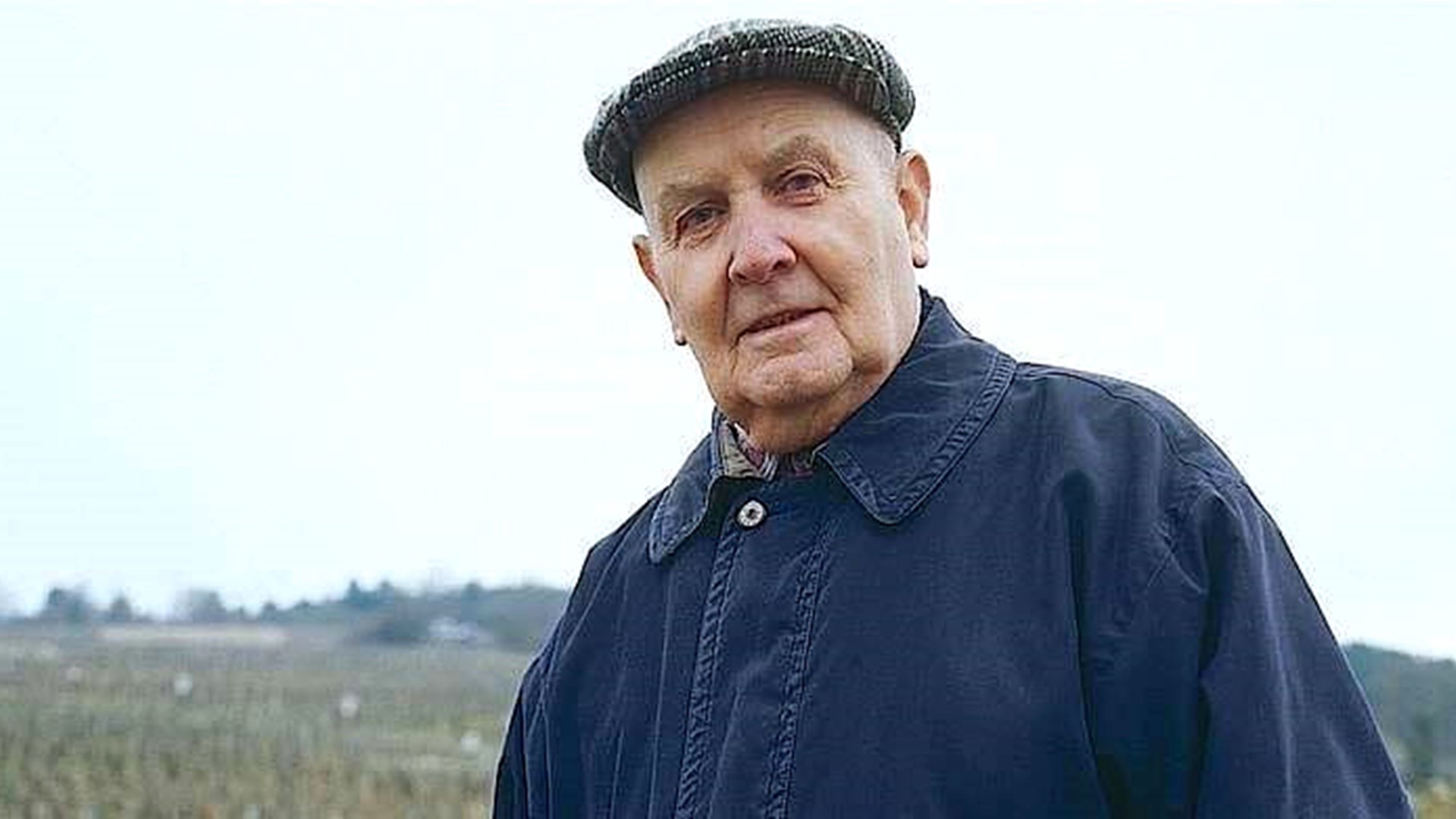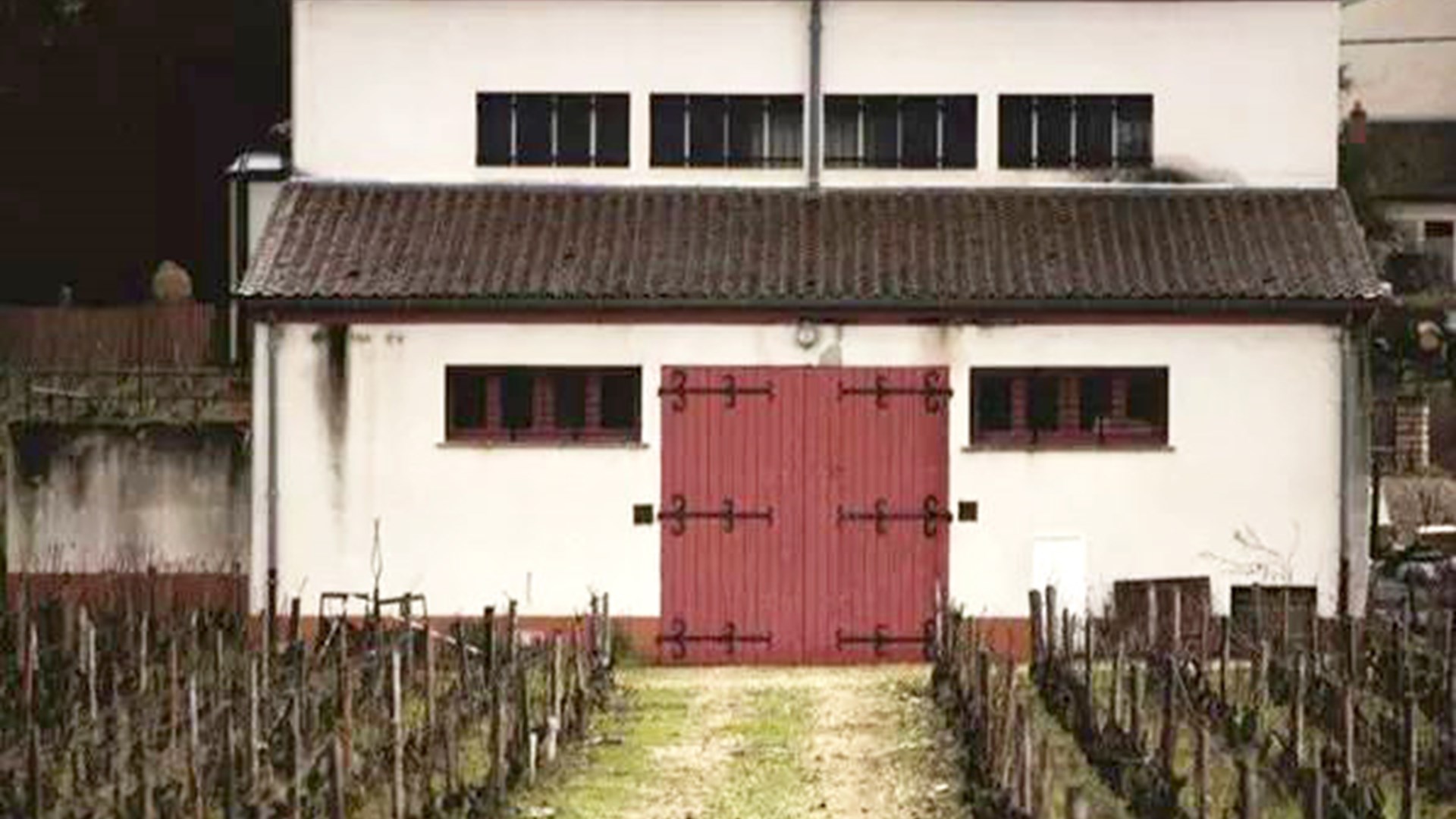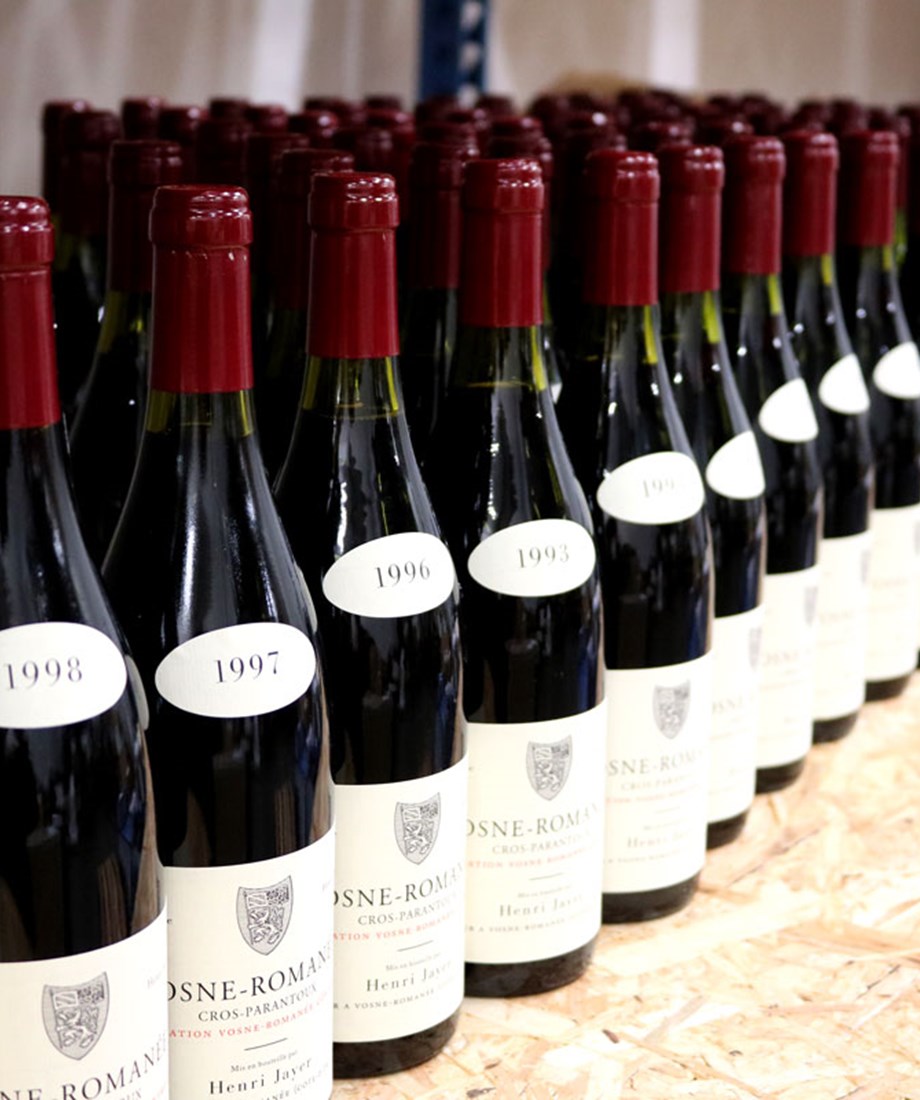Article - RareWine Academy
Henri Jayer: Burgundy's Undisputed Wine King
An unwavering wine philosophy and a deeply passionate approach to winemaking have placed Henri Jayer among the world's absolute wine elite. Learn more about the wine master.
Henri Jayer's Legendary Status Was Built On Perfectionism And Diligence
Henri Jayer came from relatively humble origins and yet managed to build a name for himself on par with the biggest names in the wonderful universe of wine. It was neither a 100-point wine nor a great tasting that led Jayer up the wine ladder. No, it was pure dedication in the vineyard and controlled production of fabulous wines in perfect balance that would become his path to legendary status.
Jayer had a personal philosophy rooted in the belief that wine should not be wrapped in cotton wool. He was adamant about letting nature take its course. Indeed, he was convinced that you cannot artificially replace elements in wine that are not there from the start. That is why Jayer put all his energy into producing top-quality grapes for vinification from vines more than 50 years old. This philosophy would prove to lead Jayer to the top.
Henri Jayer passed away in 2006 after being unofficially retired for several years. However, he continued to work in both the vineyard and cellar with his nephew Emmanuel Rouget until the end.
The Road To The Status Of Undisputed King Of Burgundy
Henri Jayer was born in 1922 and grew up in Burgundy in the commune of Vosne-Romanée. He lived there until he graduated in enology from Dijon University in the 1940s. When he returned to Vosne-Romanée during the Second World War, he helped out where he could. At Madame Noirot-Camuzet he found permanent work, where he signed a so-called metayage contract. This meant that although he made the wine, they shared the finished product between them. For many years, this was the way Henri Jayer made most of his wine.
In later years, however, the Camuzet family began to make wine themselves, so some of the parcels passed to Meo-Camuzet, with Henri Jayer helping with the production. From the outset, Henri Jayer had a particularly keen eye for the Camuzet family's parcels at Richebourg and the useless Cros Parantoux estate, which ended up playing a starring role in his worldwide fame. Over the years, Henri Jayer bought smaller parcels from the family, making some wine jointly and others with his own name.
 Henri Jayer: Burgundy's undisputed wine king in his right element, namely in the vineyard
Henri Jayer: Burgundy's undisputed wine king in his right element, namely in the vineyard
Henri Jayer Could Discover Unfulfilled Potential
The Cros Parantoux vineyard was in miserable condition and required a lot of hard work to bring it to the high-level Jayer expected of it.
The story was that it was too difficult to get decent wine out of that vineyard - it took too much and yielded too little. Fortunately, however, Jayer could see untapped potential. Cros Parantoux is the third pearl on a string that starts with Romanée-Conti, then Richebourg and then just Cros Parantoux.
In 1951 Henri Jayer bought a small piece of Cros Parantoux, and in 1953 another from Madame Noirot-Camuzet. With large amounts of dynamite and more than hard work, Jayer made the land usable, so that in 1953 he could plant his first vines. And thankfully so. In 1997, he bought the last piece of the vineyard, bringing his total holdings to 0.72 hectares.
The Essence Of Henri Jayer
Over the years, Jayer has cultivated Camuzet's share of the Cros Parantoux field and received half as payment. There has been some ambiguity as to where and when which parcels have been the basis for Jayer's wines. Overall, the field consists of three parcels, and today Meo-Camuzet owns one and Emmanuel Rouget the other two.
After many years of new plantings and hard work, Jayer was ready to release its first vintage of Cros Parantoux from the 1978 vintage, and it received full positive attention from the start. Over the years, it is also this wine that has deservedly been the spine of Henri Jayer's world reputation.
It is said that if you taste it just once, you will never forget it. In a good year, around 4,000 frugal bottles of Cros Parantoux are produced.
Henri Jayer In Vineyard And Cellar
Henri Jayer has not revolutionised the world of winemaking as such, but he has managed to perfect various techniques that have collectively lifted his wines to sky-high levels. Today, some producers are said to be of the "Jayer school", following many of his principles.
In the vineyard, Jayer was a great believer in optimally ripened grapes, and only the best found its way to the cellar. All vines were also pruned and treated by hand, which only underlines Jayer's perfectionist approach to winemaking.
All grapes were sorted first at harvest and again on arrival at the cellar. In the cellar, Jayer was possibly one of the first to introduce cold pre-fermentation, which draws color and extract out of the grapes before they begin to release tannins during alcoholic fermentation.
Furthermore, all grapes were 100% destemmed, contrary to trends in the area today. Overall, this produced the soft juicy tannins that characterize Jayer's wines. Naturally, all wines were fermented only with their own natural yeast and not filtered at bottling. Fermentations were not rushed but allowed to take the time necessary for the best results.
 Henri Jayer's home in typical Burgundian country style
Henri Jayer's home in typical Burgundian country style
Cros Parantoux - Grand Cru Quality With Premier Cru On The Label
"Even God did not anticipate such Pinot Noir when he invented the variety." Neal Martin on the 1993 vintage of Cros Parantoux.
The Cros Parantoux vineyard is 1.01 hectares and today it is considered the best premier cru vineyard in Burgundy. This is based solely on the wines Henri Jayer produced here from 1978 until 2001, which was his last vintage on the estate. The latest vintages from Cros Parantoux easily cost +€ 30,000 per bottle excluding duty, VAT and taxes, which only underlines the quality of Jayer's wines.
Furthermore, in 1990 Jayer sold a case of 12 bottles of 1985 Cros Parantoux for just € 300. In 2016, a similar box was sold at auction for just under € 250,000.
Today, the tradition is carried on by his nephew Emmanuel Rougot, who was taken under Henri Jayer's wide wine wing. The quality from the field is still absolutely top class. The last part of the vineyard is now owned and cultivated by Meo-Camuzet, who are responsible for some of Burgundy's most sought-after wines.
From Nuits-Saint-Georges To Richebourg Grand Cru
For Henri Jayer, it was never a question of becoming the biggest producer in Burgundy. He just wanted to do as well as possible with the small parcels he had available. His methods in the vineyard and cellar also required great attention, which meant that the volume of wine over the years remained small.
In a good vintage, well over 10,000 bottles came to the market from the master, so the few bottles still on the market have risen to astronomical prices. Since Jayer's death, his bottles have become so sought-after that there are actually many fakes in circulation.
In their own way, wines from Henri Jayer each stand as a reference point for what many other producers want from their Burgundy wines today. In addition to the aforementioned Cros Parantoux, Henri Jayer produced the following wines:
Grand Cru From Outstanding Echézeaux
Echézeaux is one of two grand cru wines in Jayer's range. A wine where Jayer benefited from several different parcels in the vineyard, allowing him to take advantage of the different soil types to produce a wine with good complexity and balance. The combination of the different parcels helped to create both balance and complexity.
Powerful Wine From Richebourg
Richebourg is the second of two grand cru vineyards that Jayer had possession of. On this grand cru he owned just 0.3523 hectares divided into two small parcels. From this Jayer made about 2-3 barrels per year, which corresponds to about 900 bottles. The 1987 vintage was the last Jayer vintage from here, and it is almost unthinkable to find a bottle of Jayer wine from Richebourg for under € 25,000 per bottle excluding duty, VAT, and taxes.
Both parcels are located directly adjacent to Cros Parantoux as well as the point where the two vineyards meet. At Richebourg, however, the soil is slightly deeper before the stony layer appears. The extra loose limestone gives a little more finesse and depth to the wines. This was clearly the most powerful of the wines produced by Jayer.
Vosne-Romanée Les Brûlées Premier Cru
Vosne-Romanée Les Brûlées is perhaps the most stable over the years from Henri Jayer, according to those who have tasted a wide range of the legend's wines. It is a vineyard that is optimally located in the extension of Richebourg. The last vintage from here was 1987, before the parcel passed to Meo-Camuzet.
Elegant Wine from Vosne-Romanée Les Beaumonts
”Drinking Beaumonts is always a great pleasure” Emmanuel Rouget. Most of the wines from Henri Jayer were made in vanishingly small quantities, and this Premier Cru is no exception. The entire vineyard covers 11.3 hectares, of which Jayer had access to 0.23 hectares. A wine that often produced elegant wines with balanced tannins. In terms of style, this and Les Brûlées are not far apart in taste.
Vosne-Romanée Village
This is the classic Village of Vosne-Romanée, the village where Henri Jayer both lived and grew up. As usual, this wine was used to pick up from his better parcels if there was any leftover, or when he did not think the quality was quite good enough to bottle them with premier cru on the label.
The wine from Cros Parantoux Jayer was first found good enough to release from the 1978 vintage. Until then, the wine was included in this village wine. In addition to his premier cru parcels, Jayer harvested grapes from three different smaller parcels in Vosne-Romanée for this wine.
Nuits-Saint-Georges Les Meurgers Premier Cru
This is the only field outside the commune of Vosne-Romanée, although it is only a short distance from the border between the two. It is a wine with good intensity and it is very characteristic of Jayer. This is a fine illustration of how the producer can almost trump the commune when it comes to Burgundy.
Nuits-Saint-Georges Villages
Nuits-Saint-Georges is the neighboring commune to Vosne-Romanée, and it is, as mentioned, the only place where Henri Jayer was outside his own sphere. He had access to two parcels that were not classified as premier cru. Located in two different places, this produced a wine with good complexity, but less finesse than Jayer's Vosne-Romanée wines.
 Bottles with Henri Jayer's name are in demand all over the world and almost impossible to find.
Bottles with Henri Jayer's name are in demand all over the world and almost impossible to find.
The Legacy Continues
When Henri Jayer retired in 2001, he officially stopped making wine. But that did not stop him from continuing to work in the cellar of his nephew Emmanuel Rouget, who today makes the wine from the family's vineyards. There are stories that Henri Jayer wanted to be in the field, and in fact he preferred to be in the cellar. Otherwise, he quietly handed over the reins to Emmanuel Rouget.
The last story comes from the courtyard of the farm, where an already very ill Henri Jayer arrives after the 2005 harvest. Here he asked to taste all the barrels from the cellar but was unable to go down there. Emmanuel poured him the wines and Henri Jayer smiled. In parting, he gave Emmanuel peace of mind when he confirmed that Emmanuel was now making extraordinary wine. He was approved to carry on the legacy.
Today Emmanuel Rouget makes the wine from the family parcels, but many parcels have also gone back to Meo-Camuzet, who today makes Cros Parantoux from his part of the field. There is no doubt that no one in Burgundy makes wine as Henri Jayer did, but Emmanuel Rouget comes as close to the master as possible.
The Final Chapter Of Henri Jayer: Biggest Wine Auction To Date
On 17 June 2018, perhaps the final chapter was written in the legend of Henri Jayer. The Swiss auction house Baghera put the last bottles from Henri Jayer's own cellar up for sale. The family could see that this was the best way to realise the last bottles and at the same time have full control that they went to the intended recipients.
In total, 855 bottles and 209 magnums were sold that day. All bottles came straight from the cellar and had fresh labels and caps applied before shipping. This was done with the utmost love by Henri Jayer's nephew Emmanuel Rouget and Henri's daughters. In addition, all bottles were fitted with the Profftag technique so they can be traced back to this sale. As a final protection, they were placed in new wooden cases, made uniquely for this auction.
At this auction, a case of 12 bottles of Cros Parantoux went under the hammer and achieved a hammer price of over € 500,000. When the sale was finalised at the end of the day, it was the largest private wine auction to date, with sales of 34.5 million Schweitzer francs, and it marked a fine and well-deserved end to Henry Jayer's great wine career, as one of the absolute greatest producers in Burgundy ever.
